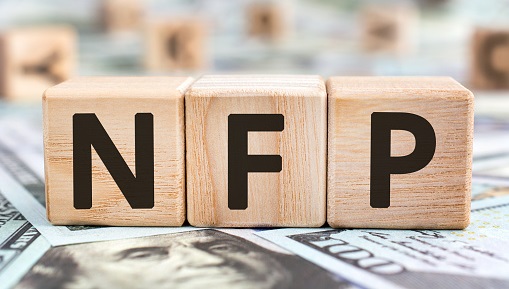There was something for everyone in the recently released August US labour market report. Starting with the bad; the headline non-farm payrolls (NFP) number (which is the net change in total employment on the month) came in at 235K, well below the median analyst forecast, which had been for the economy to add 728K jobs (according to a Reuters poll) in August, and below even the lowest individual analyst forecast (which was for 350K jobs to be added). Moreover, in an ominous sign for the service sector, August saw no net gain in hospitality and leisure sector employment. The US economy thus added jobs at its weakest pace since December 2020.
The main reason cited by analysts and markets commentators as to why the pace of job creation in the US economy slowed in August has been the rise in delta Covid-19 variant infections over the course of the month; at the end of July, the seven-day moving average of newly reported Covid-19 infections was under 80K, but this had doubled to just under 160K by the end of August. Despite the fact that demand for labour in the US economy at the moment appears higher than supply (the most up-to-date JOLTs data showed over 10M job openings in June, more than the 8.7M people reported as unemployed in the latest labour market report), analysts said that 1) a lack of affordable childcare (many schools remain closed for in-person learning), 2) fears of contracting the coronavirus, 3) generous unemployment benefits and 4) pandemic-related retirements, continue to all weigh on the labour market recovery. Given the weakness in the headline NFP number, some market commentators framed the latest jobs report as a “disaster” that will take the pressure off the Fed to formally announce plans to taper its QE programme at either the September or October FOMC meetings.
However, other aspects of the recently released US jobs report made for much more positive reading. The unemployment rate dropped as expected to 5.2% in August from 5.4% in July. The U6 underemployment rate also dropped to 8.8% from 9.2%. Meanwhile, the YoY rate of Average Hourly Earnings growth rose to 4.3%, well above expectations for a slight drop to 4.0% from 4.1% in July. That was driven by a much sharper than expected 0.6% MoM rise in hourly wages in August (expectations were for wages to rise 0.3% MoM). Forgetting the headline NFP number for a second, those numbers taken by themselves make for a very bullish picture of the state of the US labour market.
Meanwhile, returning to the headline NFP number for a second, NFP’s miss on expectations in August was actually not as bad as it seemed given that the July NFP number was revised 110K higher from 943K to 1.053M. That puts the three-month average pace of headline jobs gains at 742K, which most economists and FOMC members would agree, is a very healthy pace of jobs gains. Admittedly, that is a more than 100K drop from the three-month average pace of headline jobs gains back in July of 858K. If you had told FOMC members back in May that the economy would average 742K jobs gains over summer, they would likely have been very happy. And it does seem likely that the three-month average pace of job gains in August could rise a little, given that the headline August NFP number has been revised higher in 11 out of the last 12 years.
Some of the more hawkish leaning FOMC members (like Bullard, George, Mester, Kaplan and Bostic) might thus look through the weakness in this month’s headline NFP number and instead focus on some of the more positive aspects of the report and might, thus, reiterate calls for the bank to promptly begin to taper its asset purchase programme. Fed speak over the coming weeks ahead of the next FOMC policy decision on the 22nd of this month will thus be of great interest to market participants.
However, a key uncertainty is whether the pace of job gains can rebound in September and October; some analysts are not sure that it can, given that Covid-19 infection rates continue to rise in the country, meaning the associated drag on hiring may well continue. Indeed, alternative measures of US economic health which correlate closely to labour market health, such as business surveys (excluding the August ISM manufacturing PMI) and consumer sentiment surveys, mostly turned lower in August due mainly to the resurgence of the virus and this looks set to continue into September. It seems likely that the above concerns will keep the more dovish members of the FOMC, including core members such as Chairman Powell, more cautious about signalling a move to QE tapering. Given his dovish tone last week and now this week’s weak headline jobs number, an official QE taper announcement at the September FOMC meeting now seems unlikely. But an announcement in October remains in play based on how the September labour market report comes out (it will be released this time next month).
What this means for markets
The market reaction to the release of the August labour market report has been fairly mixed. Generally, the dollar has weakened and the DXY at one point fell below 92.00 to near one-month lows, though has now recovered to around 92.10. This has helped gold break convincingly above $1820 and to near one-month highs just under $1830. However, gold is struggling to test July/early August highs in the mid-$1830s because US bond yields have moved higher; 10-year nominal yields now around 1.33% (up from below 1.30% before the data) and with 10-year TIPS yields close to highs of the day just under the -1.0% mark. The confusing market reaction (normally you would see the dollar and bond yields fall together or vice versa, but not move against each other) maybe because 1) markets suspect the weak headline NFP number reduces the chance of a QE taper announcement before October (USD negative) and 2) signs of upwards pressure on wage growth might be giving a boost to long-term inflation expectations (pushing long-term yields higher).
Over the next few weeks, it seems likely that the US dollar can continue to weaken as more and more evidence emerges that the US economy is currently undergoing a slowdown due primarily to rising Covid-19 infection rates. This is especially set to be the case if the Fed waits until November or later to announce its QE tapering plans. But most analysts suspect that the US economic recovery will robustly continue, even if at a slower rate, supported by what has become a tight labour market and a still large amount of excess savings being held by consumers. That means the Fed’s monetary policy normalisation plans will at worst be delayed by a few months, not derailed. That means that the Fed is set to remain well ahead of the likes of the ECB and BoJ when it comes to monetary policy normalisation and is likely to be moving in the opposite direction to the PBoC, which is expected to implement a few more rate cuts later in the year to support slowing Chinese economic and credit growth. This should ultimately mean that while the USD may face downside risks in the coming months, it should remain supported in the long run.




